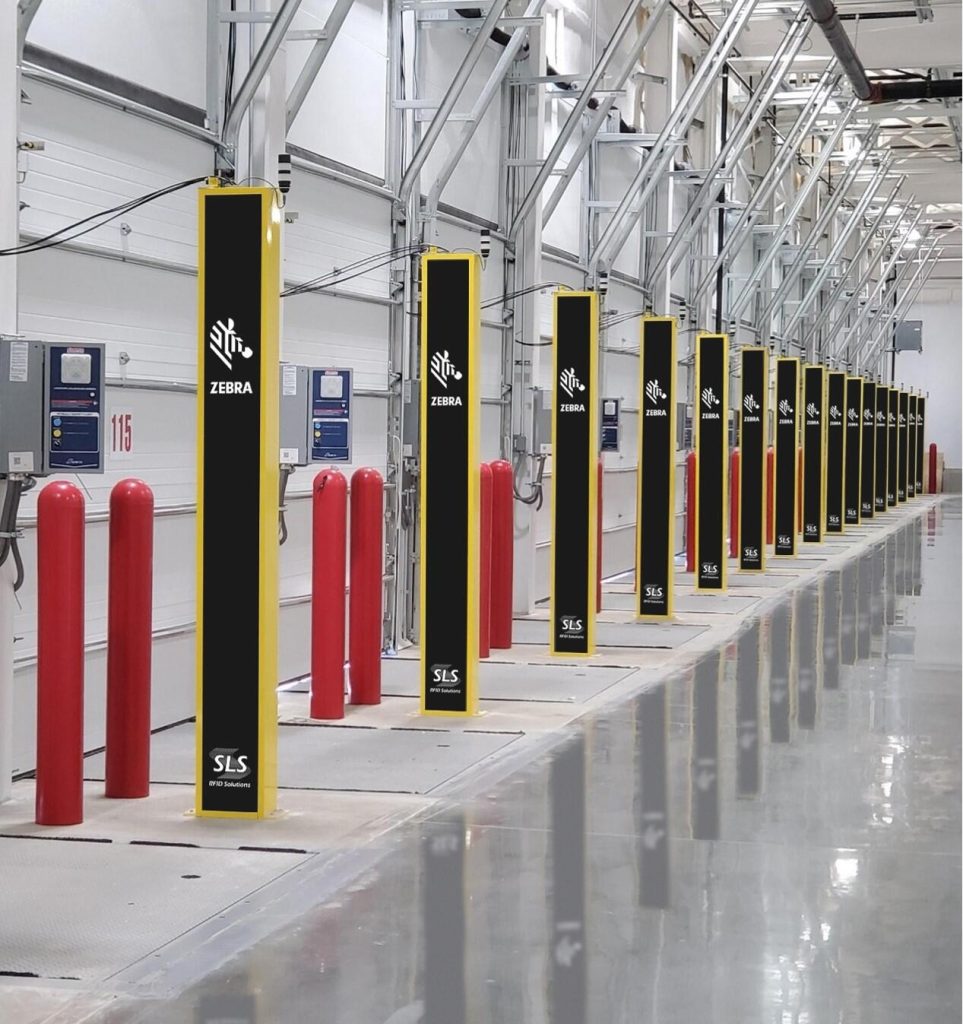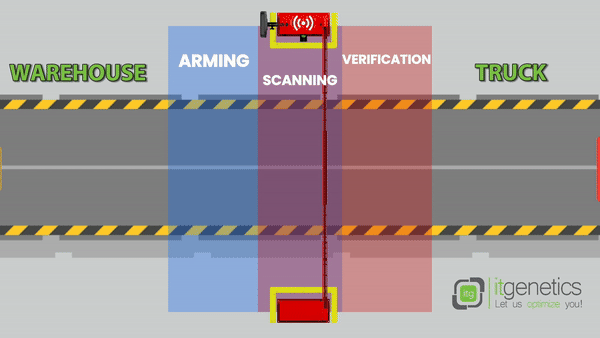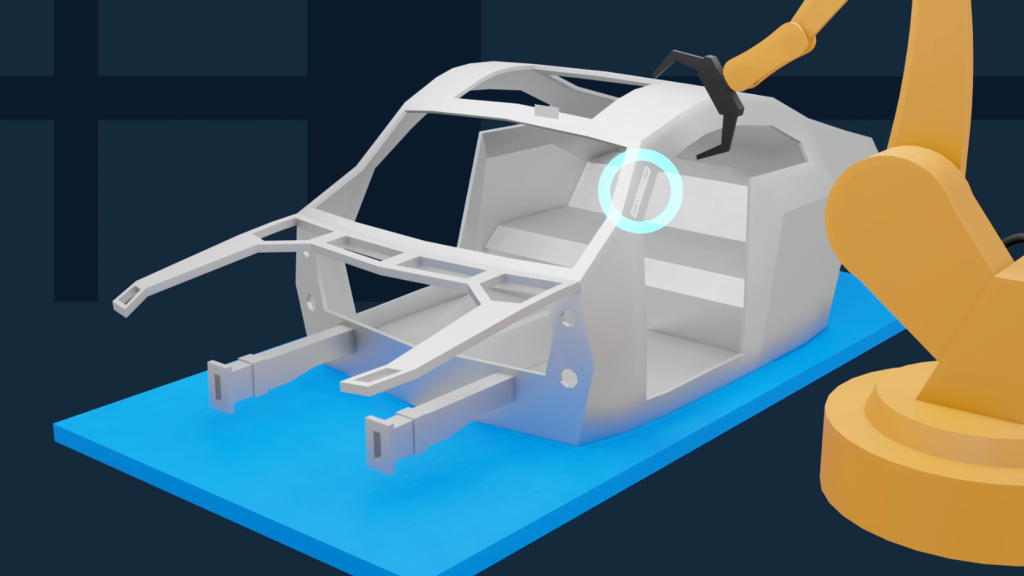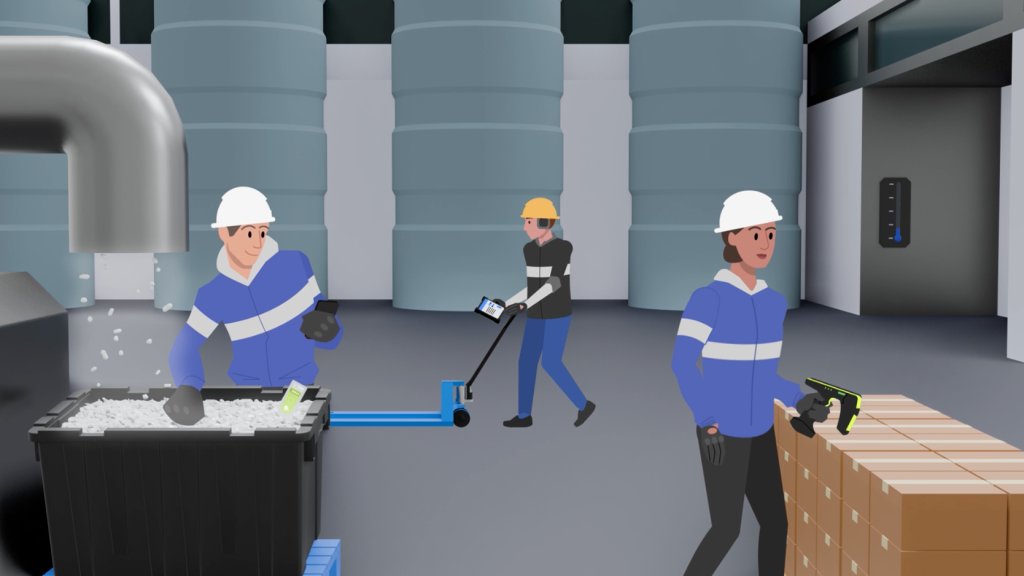Efficient company operation can begin with accurate tracking of production and inventory processes.
Whether we are talking about industries like automotive, retail and textiles, manufacturing, or fulfillment, without a well-organized operational system, managing a large volume of products can become a complex and difficult process.
In process management, using traditional technologies can lead to significant delays in logistics and production operations.
From receiving and storing goods to shipping, these systems can affect overall efficiency and reduce the quality of services offered to customers. Being prone to errors, they require considerable employee involvement, which can result in delays, increase operational costs, and decrease productivity.

Implementing an RFID technology solution transforms these challenges, optimizing operations and improving data accuracy.
It replaces manual barcode scanning and reduces human errors. It efficiently monitors inventories and checks multiple products simultaneously without the need for manual handling.
Regardless of the commercial or industrial field you operate in, integrated RFID scanning solutions can help maximize efficiency and provide high data accuracy as part of an automated inventory tracking process.
RFID scanning gates assist in managing and monitoring inventories, controlling costs, and optimizing distribution flows with fast, reliable, and efficient solutions.
RFID technology confirms the number and type of products placed on the pallet within seconds and sends this data to the server. The gates count the tagged items brought by employees.
When a pallet passes through the gate, the system can detect its direction of movement, accurately recording the operation of entry or exit from inventory or specific production stages. The RFID solution is fully automated and allows real-time updates to databases as pallets are stored, moved, or shipped.
Adopting RFID solutions for pallet scanning can significantly reduce human errors in various stages of the logistics or production process. Pallets can be scanned even without direct visibility of the tags, ensuring that all products are accurately accounted for without human intervention.
With this solution, no action is required from the forklift operator who passes the pallet through the gate.
Automated inventory tracking is essential for logistical and production efficiency, ensuring accurate inventory management with instantaneous data visibility. Each pallet tagged with RFID is automatically detected by RFID gates placed at strategic points such as entrances, exits, or loading and production areas.
Inventory data is updated in real-time and provides information such as location, batch, manufacturing date, or quantity. Other relevant information might include the duration of product storage, movement routes, and frequency of access to certain items. This data helps in more efficient space planning and optimizing pickup and distribution routes.
By using RFID solutions, operational time is significantly reduced through faster reception, storage, and shipping processes. The reduction in human errors also leads to decreased additional costs caused by returns of incorrectly shipped products or rectifying inventory errors.
With precise and updated inventory information, you can better plan purchases and production, avoiding overstocking and reducing costs associated with maintaining excessive inventory.

Our team knows every aspect of every industry and comes to your aid to provide customized solutions.
With RFID technology, you’ll automatically know the location and flow of the inventory your business needs, whether you’re tracking products in your stores, medical and sanitary equipment and products, or automotive parts and equipment.
Contact us to select and implement the RFID solutions that best fit your company’s needs.

In the automotive industry, components are tracked from assembly on the production line to final delivery to the customer, ensuring full traceability of components and sub-assemblies. With RFID solutions, both the supply chain management process and the final assembly of vehicles are improved.

For the retail and textile industry, with RFID technology the sales and inventory process is realized quickly and efficiently. Also returns management or product restocking can be handled more easily. As a result, customers have an improved shopping experience, spending less time at the cash register or making returns.

In different phases of the production process, efficient monitoring of raw materials and finished products is facilitated with RFID solutions. This ensures better resource management and minimization of material waste.

Fulfillment operations need to keep up with the fast and dynamic demands of e-commerce. So with RFID technology, the picking and shipping process is accelerated, reducing the time between order and delivery.
Read distances for RFID tags vary greatly depending on the type of RFID system used (low frequency, high frequency or ultra-high frequency), the power of the reader and the environmental conditions. Here are typical read distances for different types of RFID tags:
Read distances for RFID tags vary greatly depending on the type of RFID system used (low frequency, high frequency or ultra-high frequency), the power of the reader and the environmental conditions. Here are typical read distances for different types of RFID tags:
RFID tags can be read simultaneously from a distance without having to have a direct field of view of the tagged items.
The effectiveness of an RFID solution, whether it is an RFID gate or a handheld RFID reader, depends on the specific application and operational requirements.
RFID gates are more effective for automated, high-volume tracking in fixed locations, while handheld RFID readers offer greater flexibility and are more suitable for applications requiring mobility and manual tag reading. The choice depends on your specific operational needs and application constraints.
Memory capacity can vary widely, from a few kilobytes to several megabytes, depending on the application and the need to store large amounts of data.
Typical memory capacities for different RFID tags:
Yes, RFID labels can be printed, and it is common practice to combine both visual and electronic identification. Printing on RFID tags usually includes text, barcodes, logos or other important information.
Several materials can interfere with RFID transmissions, affecting the performance and reliability of RFID systems.
Here are the primary materials that cause interference:
Metal (metal shelving, metal containers, vehicles and machinery),
liquids (water, beverages, detergents, etc.), dense or high-density materials (thick plastics, ceramics and wood), electromagnetic interference equipment (various industrial equipment, wireless communication devices and high voltage power lines)
Yes, The number of rewrite cycles for RFID tags varies depending on the type of memory used in the RFID tag. Normally the memory is EEPROM (Electrically Erasable Programmable Read-Only Read-Only Memory), it can typically be rewritten between 100,000 and 500,000 cycles
Standard RFID tags:
Specific temperature ranges depend on RFID tag materials and design. You should always consult the manufacturer’s specifications for the exact temperature ranges applicable to a particular RFID tag model.
In most cases, there is no need to apply multiple RFID tags to the same object to guarantee at least one read, as long as the RFID system is properly designed and implemented.
The label must be placed in an optimal position on the object in order to reach the RFID reader.
Cost for standard tag: usually very low, ranging from $0.005 to $0.02 per tag.
Cost per RFID label: varies widely by type and application, generally from $0.10 to $5.00 or more per label.